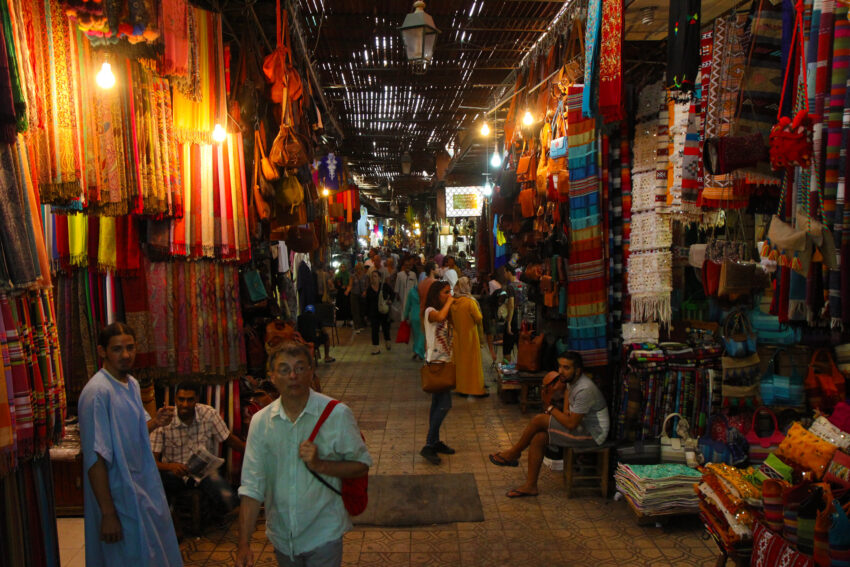
Marrakech Souks Shopping, Marrakech, Morocco is an exotic experience that gets you close to life in Morocco. Throughout different centuries, Marrakech has been a renowned trading center. Characterized for its bargain-hunting, this will be the best shopping of your life, and also an unforgettable experience.
Things to do
Explore the souks
A souk is an Arab market, traditionally an open-aired market. A variety of alleyways stretch into the heart of the souk. Rows of stalls line on both sides while some salesmen try to catch your attention. Of course, you can get lost in the souk’s streets, but don’t worry! People usually find their way back to a familiar spot.
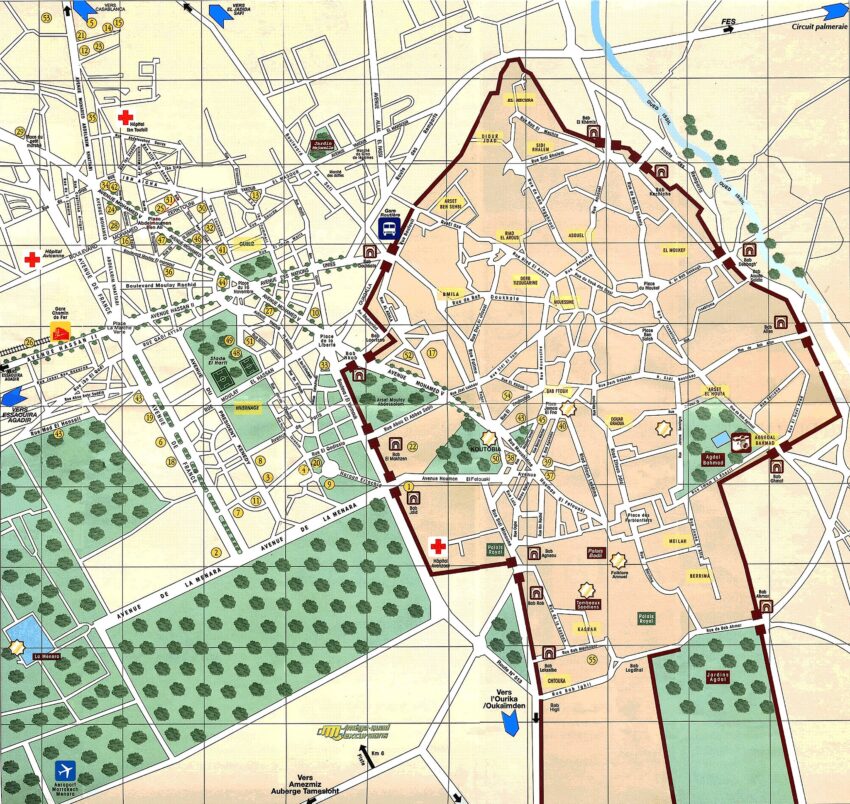
Rahba Kedima
This is the square where the Apothecary souk stands, selling just about everything. Here, you can find herbal remedies, lotions or spices that can cure either a disease or an ailment. Also, at sunset, the square comes to life, as musicians, dancers, and henna tattooers gather together. And shortly after the sun goes down, the open-air restaurants take the spotlight.
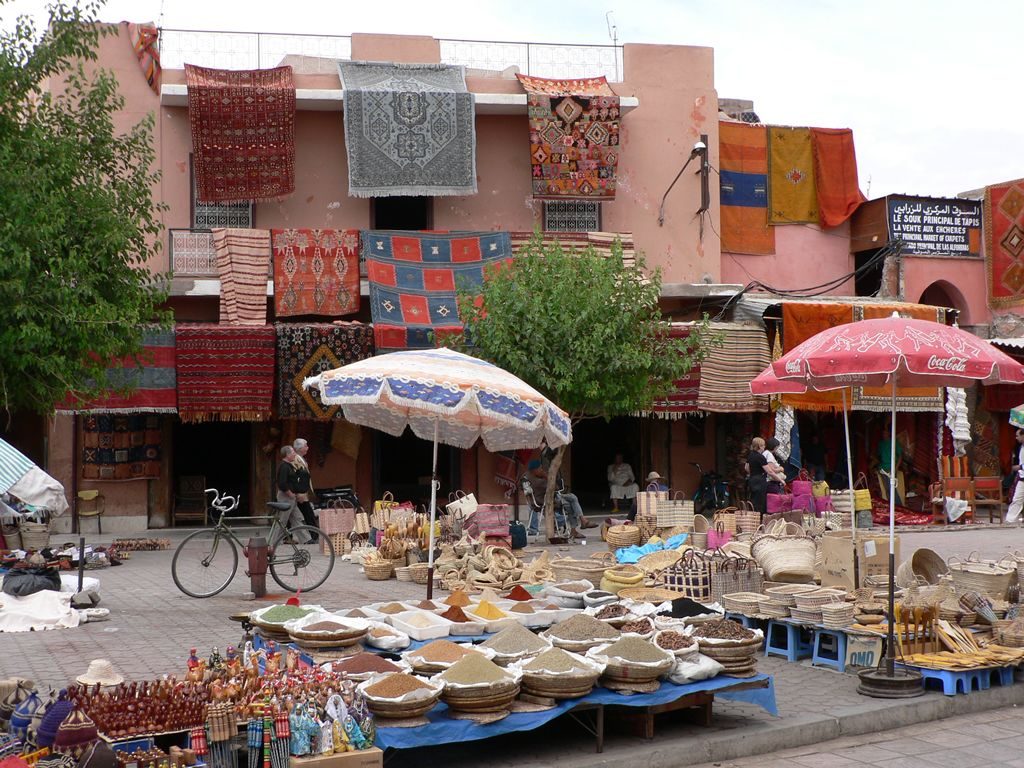
Souk Haddadine
As you leave the Rahba Kedima Square, you walk along Souk Attarine and Souk Kchachbia and then reach directly at Souk Haddadine. This is the souk of the blacksmiths, where you can admire how the craftsmen turn scraps of metal into beautiful ornates. And once you see the intricate Moroccan lanterns, you won’t be able to leave without taking one with you.
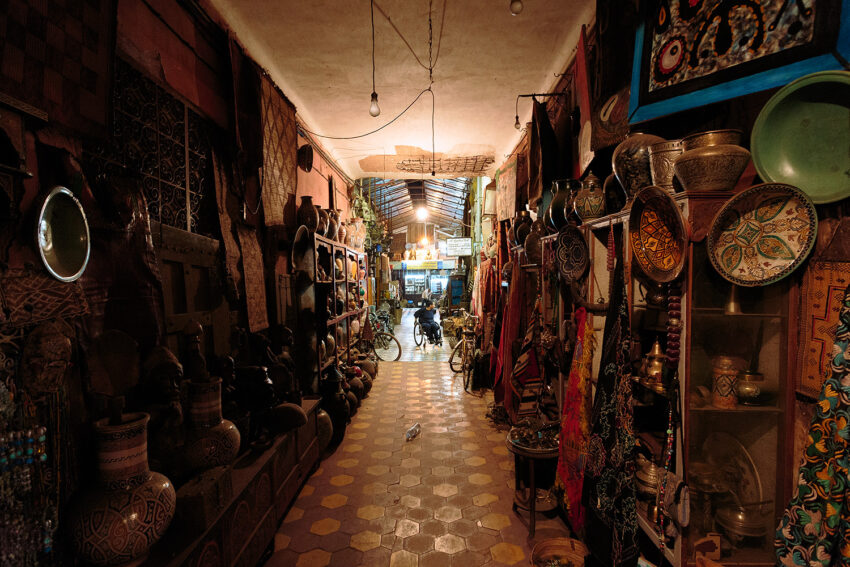
Souk Chouari
Standing southwest of Souk Haddadine, the Souk Chouari is where the carpenters display their art. Most of the pieces on this souk are made from scented cedarwood.
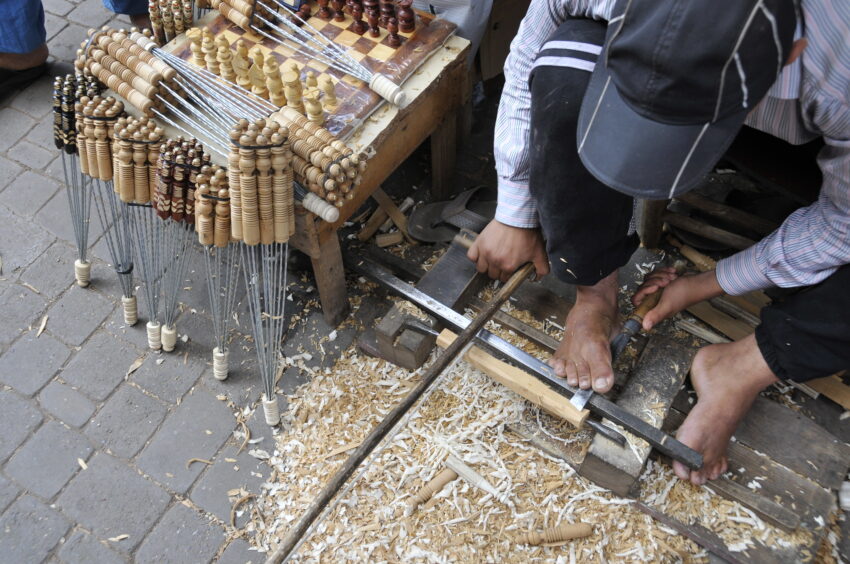
Souk Teinturiers
Further southwest, right next to Chouari, you reach the souk where wool and fabrics are dyed. Above the stalls, you can see a rainbow of wool hanging from the rafters. You can also get to see the interesting process of dyeing and drying.
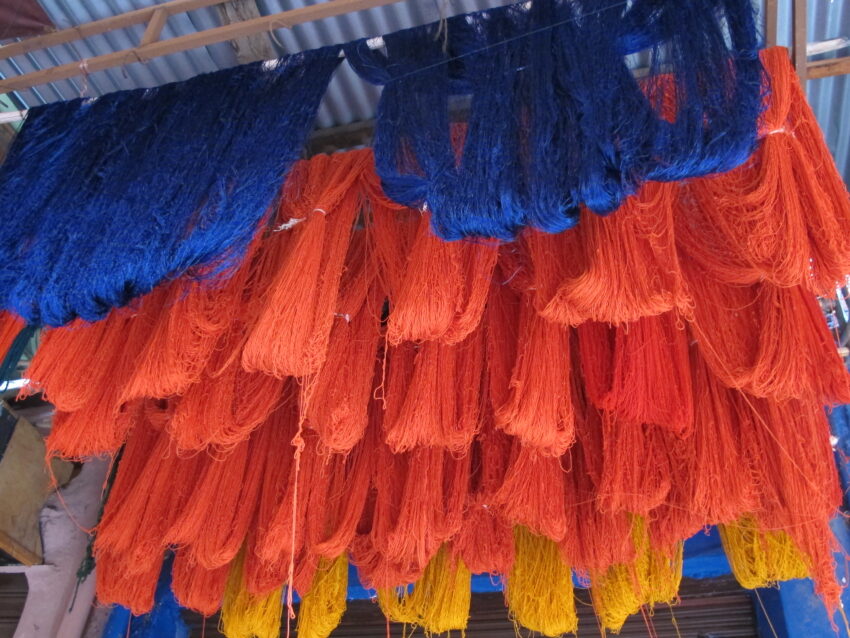
Souk des Babouches
Now you head east until you reach the Slippers Souk. This is definitely the prettiest souk, and even more colorful than Souk Teinturiers. Here is where you find the oriental leather slippers known as babouches. There is a wide variety you can pick from; beautiful patterns, jeweled or embroidered.
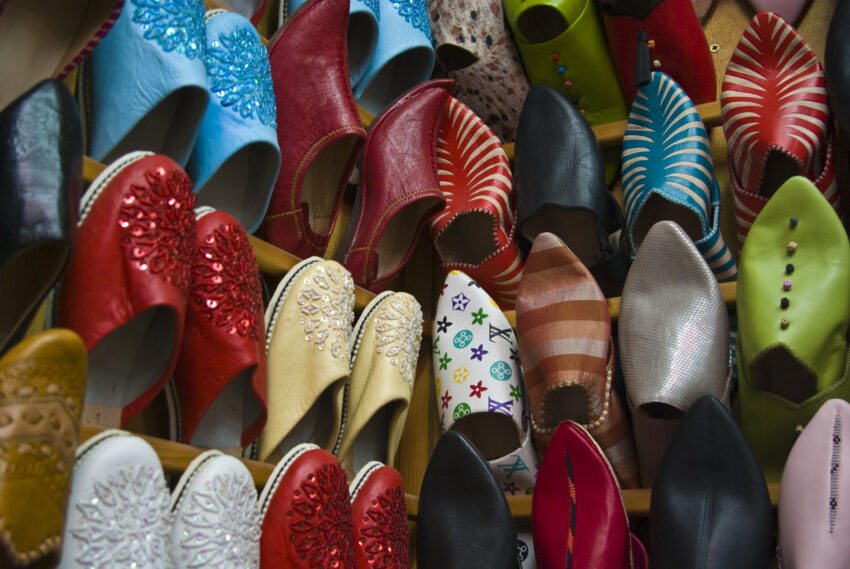
La Criée Berbère
There is another route you can take from Rahba Kedima Square. If you go north through Souk El Kebir, you reach the Carpet souk; La Criée Berbère. Now you are surrounded by all kinds of intriguing carpets, pieces that you will surely want to take home. Pay attention to the designs, since some of them can be displaying a tribe’s story.
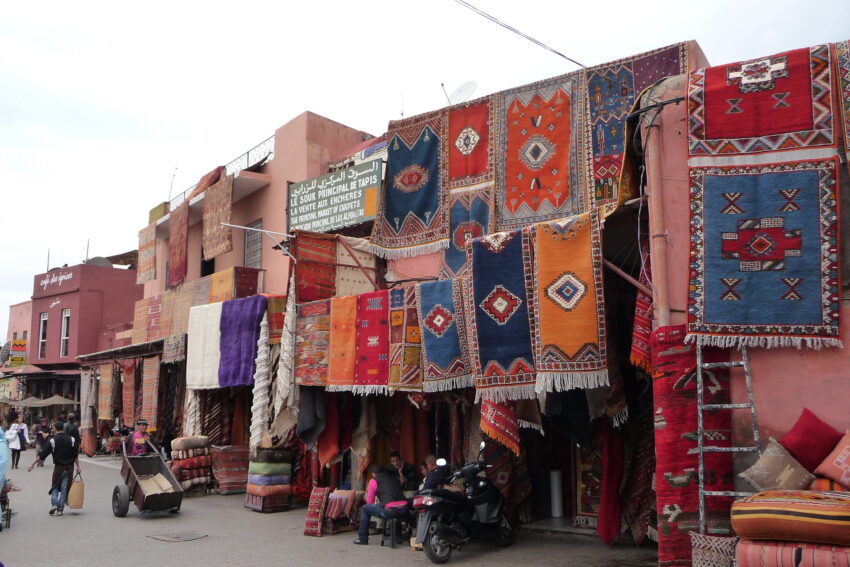
Souk des Bijoutiers
Keep following the same route until you get to the actual highlight of your souk tour. The Souk des Bijoutiers is the place for the jewelers, with dazzling bracelets, rings, necklaces, and earpieces. Historically speaking, only the wealthier locals could access this souk, where they purchased their distinctive accessories.
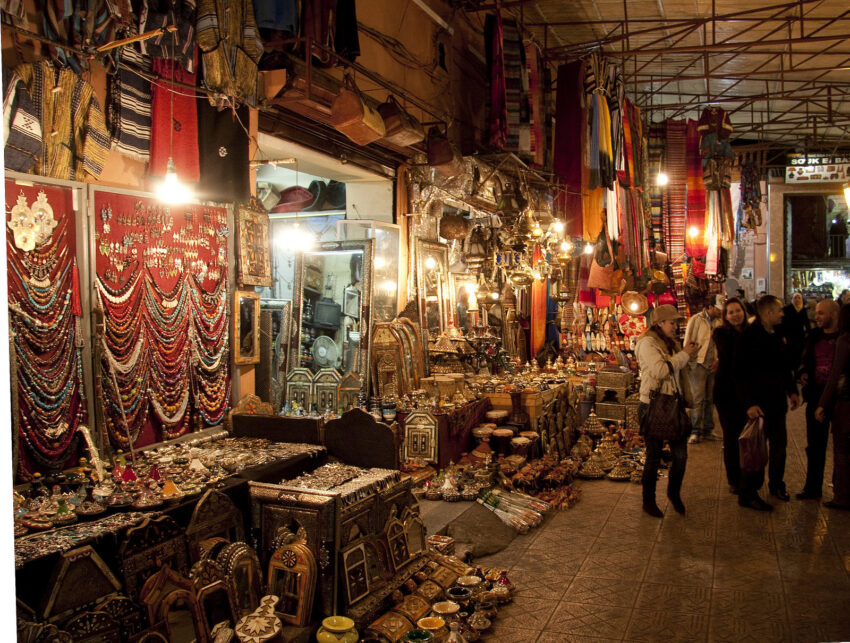
How to get there
Different airlines fly daily to Marrakech Menara Airport, located 5 km (3 miles) from Marrakech city center. I recommend you start your souk tour from Djemaa El Fna, only a 15-minutes taxi drive from the airport. Keep in mind that taxis can’t enter the zone where the souks are located since the roads are too narrow.
When to go
All year long, Marrakech’s hot and dry weather seems to never go away. However, from March to May, and from September to November, the temperatures are more bearable, ranging from 24ºC (75ºF) to 32ºC (89ºF).
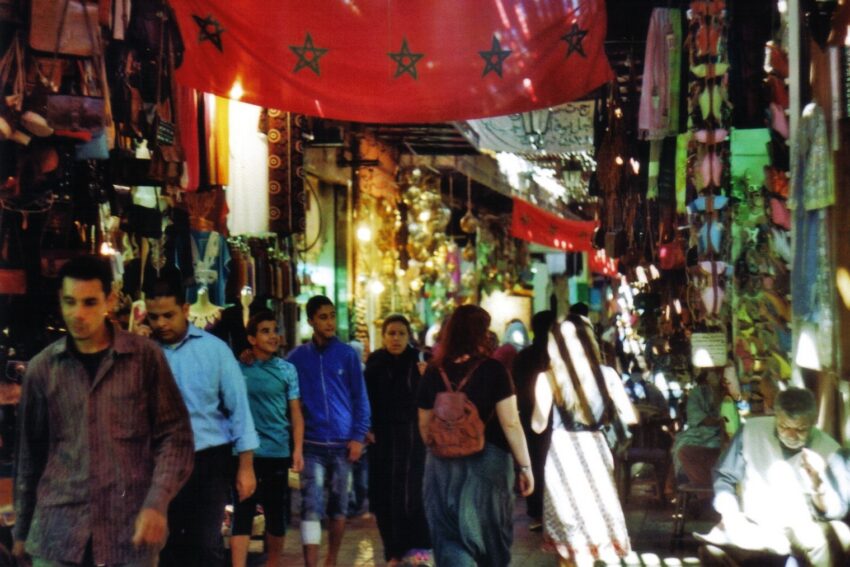
How long do I go for
If you want to get the most of Marrakech Souks Shopping, allow yourself to stay for at least 2 days.
Opening and Closing Hours
All souks are open from 8:30 AM to 9:00 PM; however, most of them close on Fridays. During prayer, merchants tend to leave their shops for a few minutes; just have a little patience and respect their customs and you will get to buy what you want.
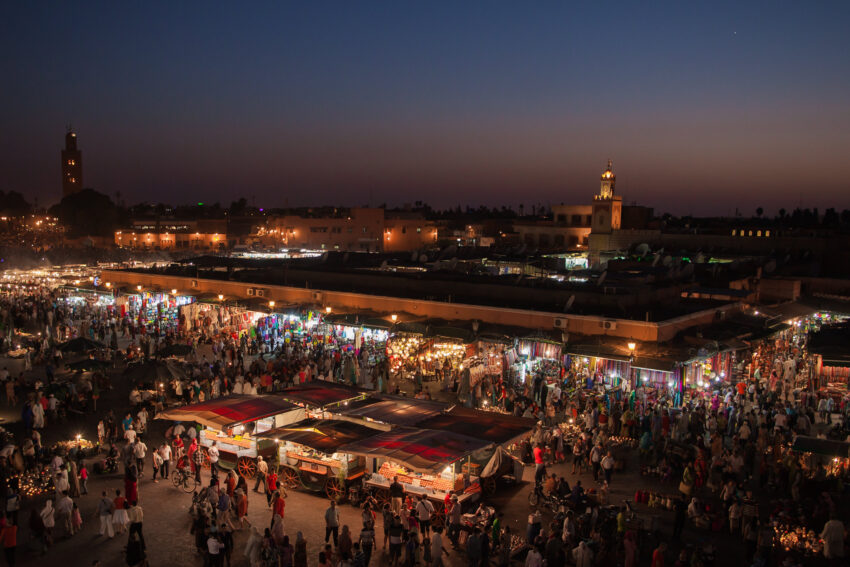
Planning
If you want to escape from all the noise, then you should try to go to a riad. Riads are traditional homes turned into stylish boutique hotels where you will feel like you’re in an art gallery. Stepping inside one of them will give you the peace you deserve; the perfect place to rest before going into a new shopping adventure. Riads are popular among tourists, so make sure to book in advance if you plan to stay in one.
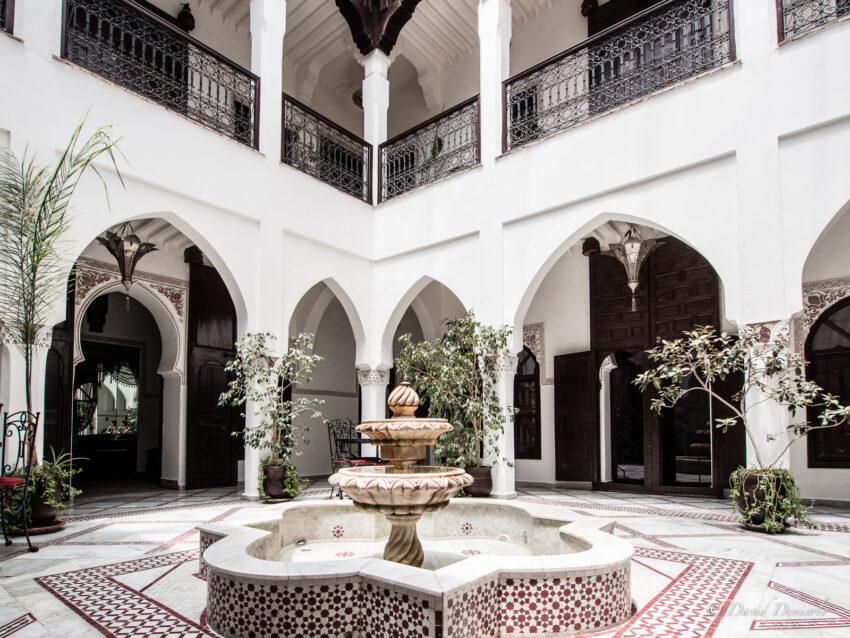
Inside Information
Photography
Be careful when you take any photographs during your souk tour. Make sure you ask for permission before taking any photos and don’t try to take a sneaky one if you’re not ready for the subject to glare at you and ask for payment.
As soon as you enter Djemaa El Fna, you will surely get a snake or a monkey placed on your shoulder without even asking. I kindly recommend to not support this kind of animal abuse by taking pictures with these creatures.
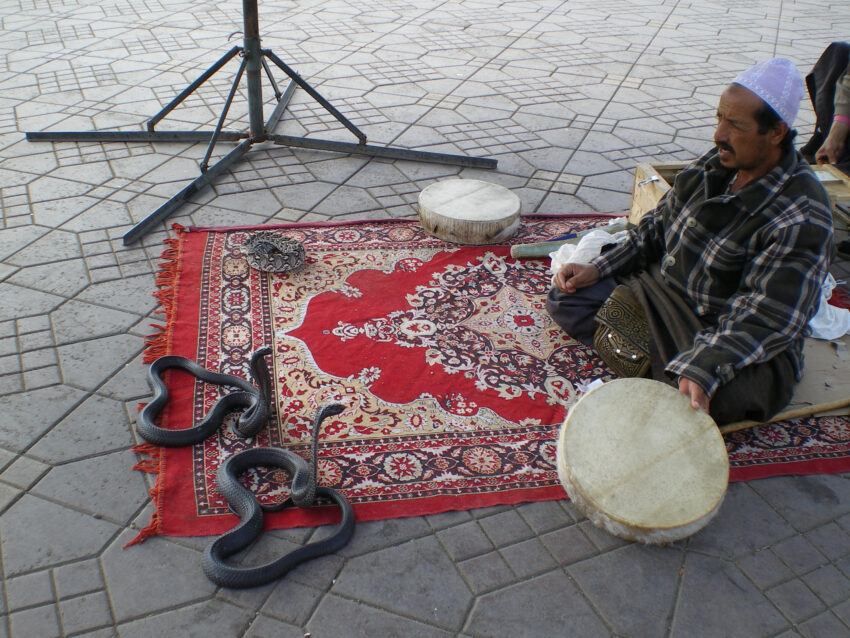
Asking for directions
Besides, if you get lost and ask a passerby for directions, you will suddenly find yourself an impromptu guide. However, soon you’ll find out that this helpful local will also want some payment for their improvised services. To avoid getting lost in the labyrinth of shops, hire a licensed local guide, grab a map or use your phone’s GPS. You can also try to spot the Koutoubia Mosque and use it as a reference point.
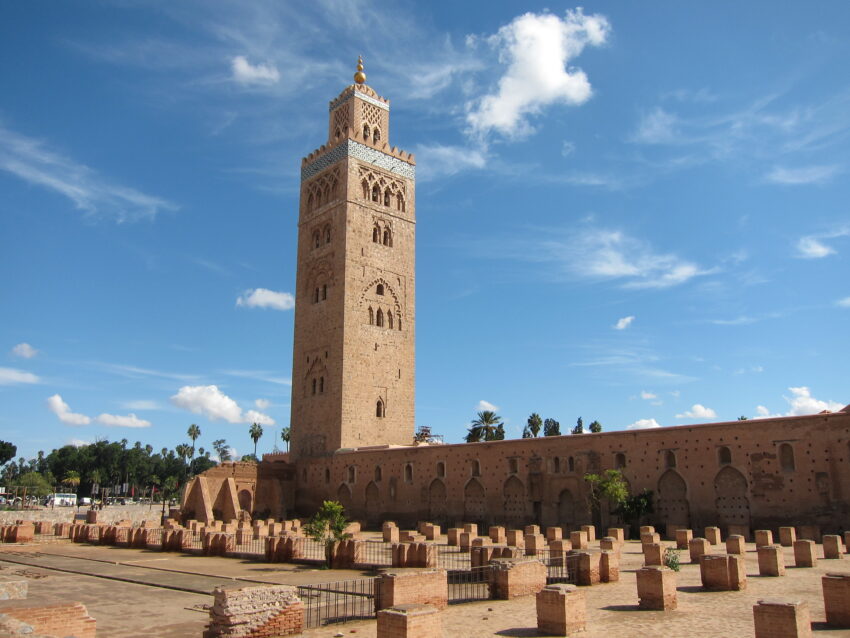
Entry requirements
If you are from a country that needs a visa to enter Morocco, the Moroccan Embassy is usually the first port of call. They charge what would be UK £17 ($22) for a single entry, and £26 ($33) for double or multiple entries. Visas are valid for 3 months and can take from 5 to 6 working days to process.
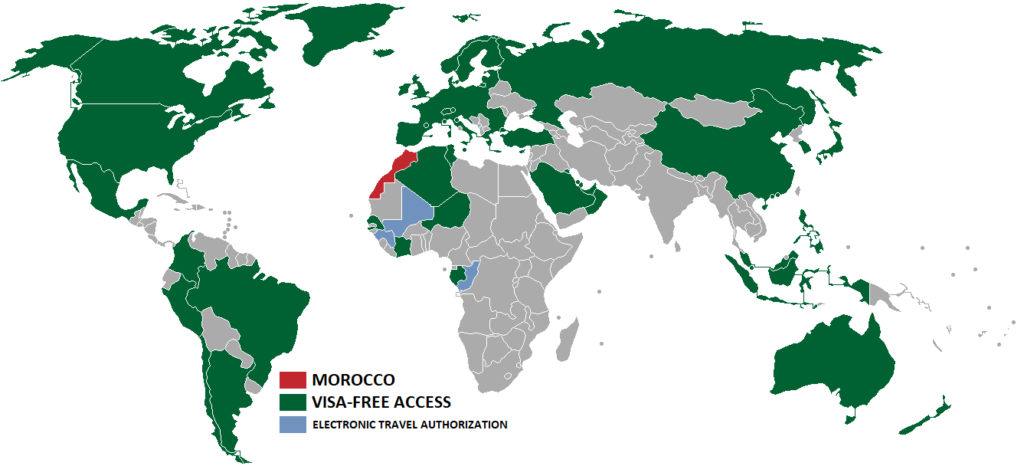
Local laws and customs
Since Morocco is a Muslim country, locals follow Islamic laws and customs. When you are here, avoid public displays of affection, especially outside main tourist areas and religious places. Besides, sexual relations outside marriage are punishable by law. If you travel with your partner, don’t be weirded out if your hotel asks you to show evidence of marriage.
Alcohol is served in licensed hotels and bars; however, drinking alcohol in the street and outside a licensed restaurant or bar can lead to arrest. Last but not least, homosexuality is a criminal offense in Morocco; avoid public displays of affection to stay safe.
Money
The local currency is the Moroccan dirham, divided in centimes (c). There are 10, 5, 2 and 1 dirham coins, along with 50c, 20c, 10c and 5c coins. However, the 10c, and 5c coins are rare lately. Some hotels might accept euros and US dollars.
Haggling
Shopping in Marrakech’s souks means bargaining; you will definitely gasp at how much prices are inflated. To make sure you don’t get swindled, ask the vendor for the item’s price first, and then state that you’ll pay 1/3 of it. This is when the haggling begins. As the vendor decreases the price, you can even get the item for half of it!
Always stay friendly, and if you can’t settle for a good price, you can simply apologize and walk away. Bargaining is actually enjoyable for most vendors, and they prefer clients that can take the time to negotiate.
Before you leave for your souk tour, ask the locals at your hotel or Riad for what prices you should expect, and what would be a reasonable price for you to pay. If you are not in the mood for bargaining, look for the boutique d’artisan. This is a government-run shop with fixed prices, located near Djemaa El-Fna.
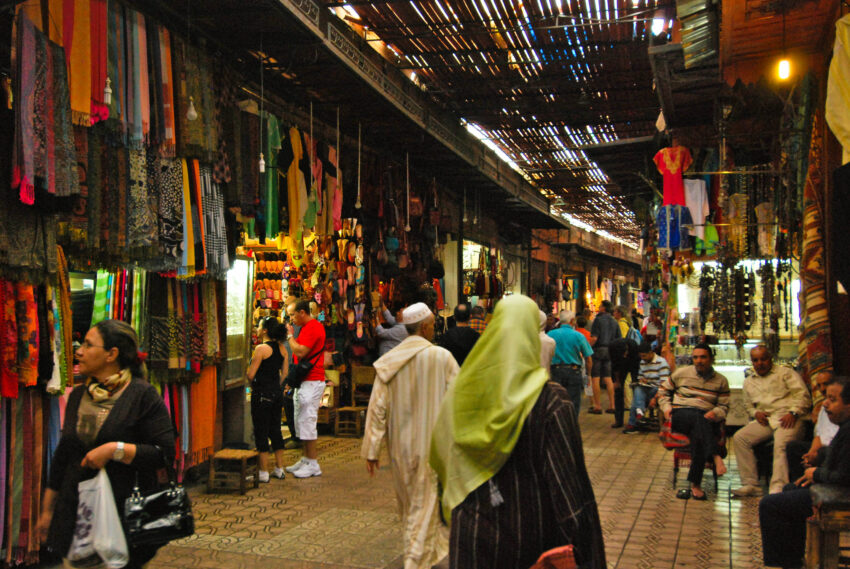
What to Buy
- Birad – These are Classic Moroccan teapots that are hard to find elsewhere.
- Carpets – The beautiful patterns and stories they hold are indeed unique.
- Leatherware – Morocco has an impressive production of leather goods, and you can buy some high-quality pieces in Marrakech for a low price.
- Rhassoul – This is known in Europe as wash soil, but in Marrakech, you can find it 10 times cheaper.
- Babouches – This is a popular item that many people buy; however, make sure they don’t have paper inside the sole. Try bending the shoe and listen for any paper-like sounds.
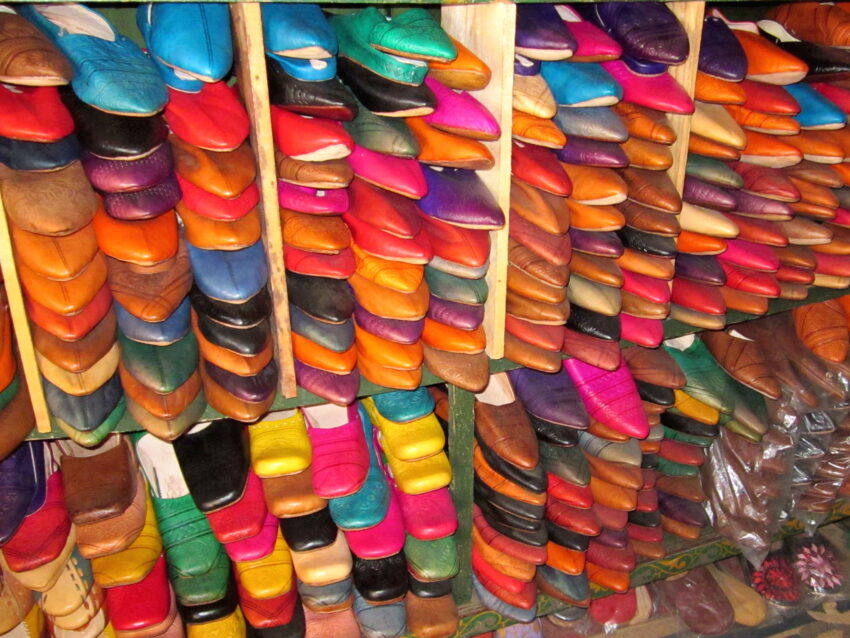
Safety and Security
Crime
As in any hectic area, pickpockets are common in Marrakech’s souks. Put your wallet and valuables in your front pockets, wear your backpack on the front, and grab your shoulder bag with one of your hands at all times. Above all, make sure your guide is operating with the agreement of the local tourist authorities, and check if they display an official badge.
Sexual assaults
If you’re a woman traveling alone, be especially careful and take all precautions to avoid harassment and any unwanted attention from men. Draw less attention to yourself by dressing properly; always cover your shoulders and wear full-length skirts, and don’t even think of packing transparent fabrics.
Terrorism
Areas in which tourists gather the most have a higher risk of an attack; follow any advice from the local authorities to stay safe. Security personnel is often located in hotels and popular tourist spots.
Health
If you want to eat on one of the stalls either on Djemma El Fna or Rahba Kedima, settle for a busy one, where mostly locals gather; the food is more likely to be fresh. You may be drawn to a henna tattoo shop, but keep in mind that these tattoos contain a chemical compound (para-phenylenediamine) that can cause swelling and an itchy rash in some people.
Check Morocco’s specific health advice on TravelHealthPro at least 8 weeks before your trip.
Natural disasters
Minor earthquakes often hit Morocco; for safety purposes, make sure you know what to do before, during and after an earthquake
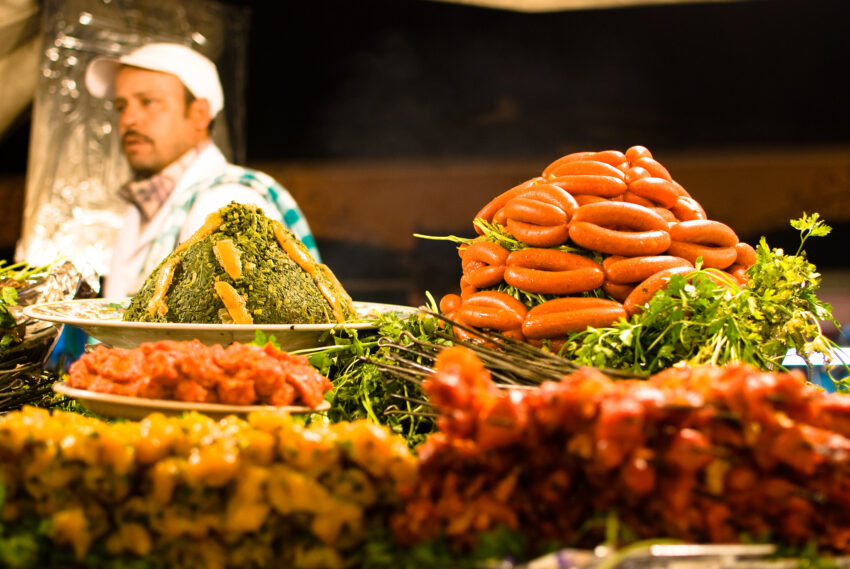
History
Throughout history, Berbers, Arabs, nomads, and tribespeople from the Atlas Mountains coincided together in this chaotic central square, Djemaa El Fna. Meanwhile, merchants from Timbuktu, Egypt, and Europe came to deal goods like cotton, gold, silver, and spices.
Then, the local population grew and vendors started building their small souks nearby main communities. This made shopping for locals a lot easier, and souks increased the number of items they sold, growing until they merged with neighbor souks.
Websites
Other Nearby Attractions
Ben Youssef Mosque
This structure is one of the most fascinating on Marrakech, and the most important mosque. Built back in 1070, it was one of the first buildings made with bricks. Later, in 1147, the mosque was demolished, since it wasn’t perfectly aligned with Mecca, and a new one was built on its place. The name, however, remained the same.
Sadly, this mosque is not open to non-Muslims, but admiring from the outside is still spectacular.
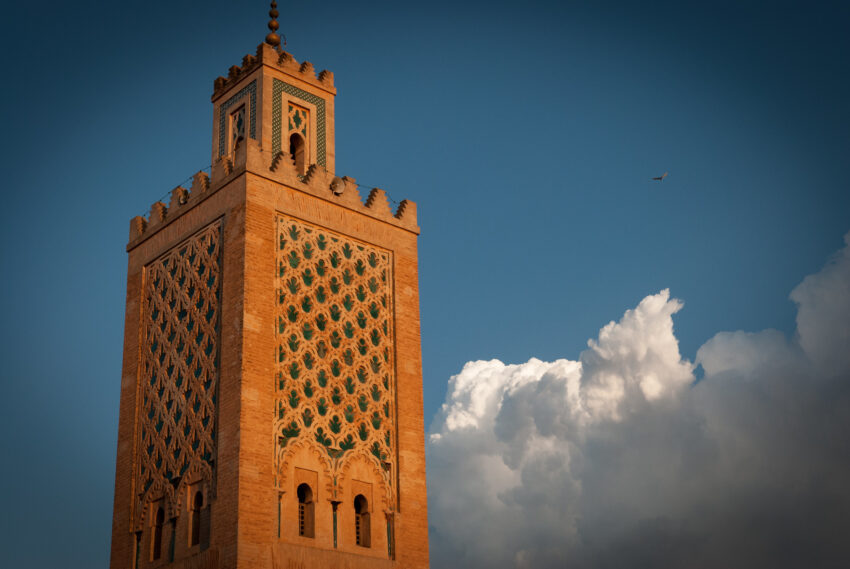
If you loved this article or found it useful, don’t forget to share it with your adventurous and travel-hacking friends! If you want more posts like this, follow us on Youtube, Instagram, Pinterest, Twitter Facebook or Reddit and subscribe to our newsletter!

